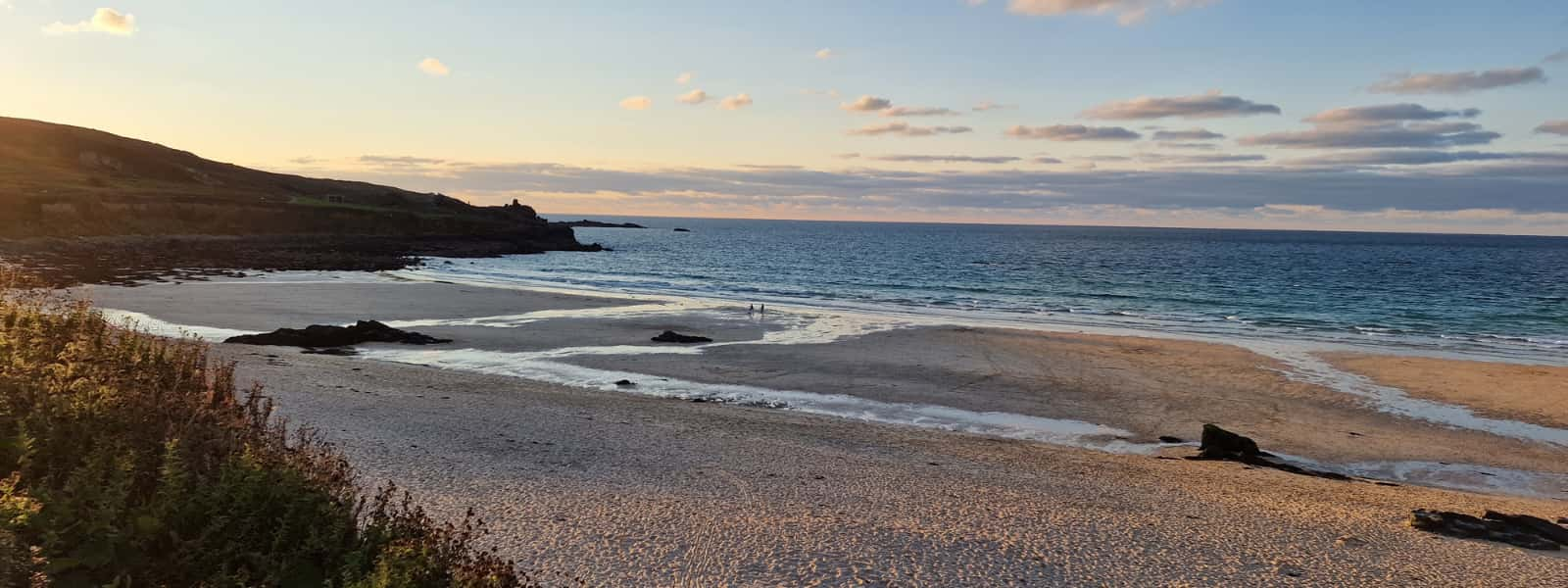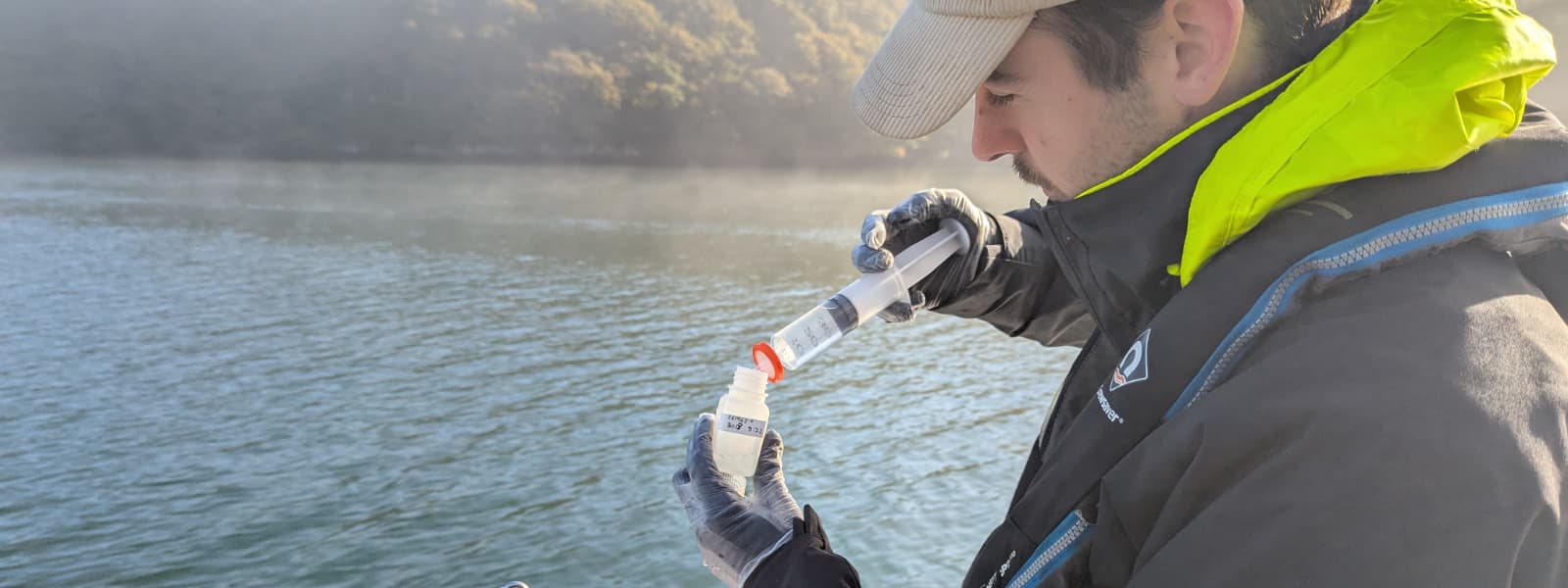At PML Applications, our work and motivations are centred around supporting a healthy and diverse Ocean. In certain areas, our expertise can be applied even further to include land and therefore create a ‘big picture’ view of the health of natural ecosystems.
The world-leading science at PML Applications and PML has a long history of influencing policy change and frameworks while paving the way for new methods and new studies to deepen our knowledge of the Ocean and its health.
Here are 10 ways we are supporting the progression towards a healthy and biologically diverse Ocean.
1. Marine Protected Area (MPA) Management and Policies
Marine Protected Areas (MPAs) are protected habitats in the ocean that are designated to safeguard vulnerable species and essential ecosystems, vital to the health of our seas. These areas promote biological diversity by providing a space where marine animals and plants can flourish and reproduce. At PML, we study and research the benefits of MPAs, influence policy change to increase protection and highlight where management measures need improvement.
- The Role of Climate-Smart Marine Protected Areas in Achieving 30×30
- UN Ocean Decade endorses PML-led project driving climate-smart marine planning
2. Environmental DNA (eDNA) Development and Detection
Environmental DNA (eDNA) is a rapidly developing novel technology with huge applications. eDNA is the genetic information found in our environment, left behind by organisms. In the marine and freshwater environment, we can sample and analyse just a bottle of water and obtain an accurate picture of which species were recently there.
At PML Applications, our Centre for Environmental Solutions is involved in the progression of eDNA techniques in order to create frameworks and best practice guides so that it can be used accurately in research projects.
3. Impacts of Fishing and Fisheries
We already know there has been a significant human impact on our oceans due to fishing and fisheries and it is important, now more than ever, that considerations and changes are made towards sustainable fishing methods. With many factors impacting fish populations, such as warmer sea temperatures, PML Applications and PML carry out leading studies and research to better understand and act on these findings.
- Climate Change to Reshape European Fisheries: New Study Maps “Winners and Losers”
- Climate change threatens fish supply: tiny phytoplankton, big consequences
4. Ecosystem Service Assessment Methods
The term natural capital refers to the resources and services our natural ecosystems provide. It encompasses all types of ecosystems from forests to oceans. At PML Applications and PML, we carry out surveys, mapping and modelling to better understand the true value of the marine environment and how our actions as a society may change this.
- New project: TRansformative Actions for resilient Coastal Communities (TRACC)
- “Sea The Value: Supporting nature recovery by advancing natural capital practices and developing essential finance mechanisms”
5. Sensitivity Mapping
Sensitivity mapping refers to establishing and highlighting the most sensitive habitats based on certain criteria. Our work at PML Applications and PML involves both setting the parameters for sensitivity mapping and identifying qualifying habitats. For example, our scientists have completed work on identifying and predicting the effects of climate change on marine-irreplaceable habitats. These are habitats that cannot be successfully restored or replaced if they become damaged or extinct.
6. AI Species Detection
With AI becoming a common feature of everyday life, PML Applications and PML look to understand and develop uses for AI technology in a scientific setting. Our innovative scientists are exploring ways that AI could be used to protect our planet. One of the ways AI is being developed to assist our research is AI Species Detection, which uses imaging to identify and log species to help collect data on the biodiversity in our environment.
- Project to revolutionise deep sea understanding using AI awarded pioneering grant from Bezos Earth Fund
- PML championing Deep Sea Biodiversity and Sustainable Ocean Planning at the 2025 UN Ocean Conference
7. Nature-Inclusive Design Projects
Nature-inclusive design, also known as nature-based design, aims to provide habitats within human-built structures. When placing structures at sea or considering how we interact with the marine environment, we can optimise the use of such structures by not only minimising impact on the surrounding ecosystem but also by ensuring they are beneficial to the environment. This can also extend to natural additions to the environment, for example, establishing areas of sea grass and kelp as a nature-based carbon removal system also encourages other marine life to populate the area. At PML Applications and PML, we assess and predict the environmental impact of nature-inclusive designs and continue to monitor and test once they are in place.
- Seascape carbon management beyond wetlands as eligible blue carbon activities
- Protecting the ocean through marine net gain
8. Ocean Alkalinity Enhancement (OAE) Research and Development
The ocean’s ability to absorb carbon dioxide has led to trials and studies on different methods for carbon dioxide removal from the atmosphere. One of these techniques is Ocean Alkalinity Enhancement (OAE), which involves treating seawater to have an alkaline pH so it will react and store carbon. At PML Applications and PML, we test and research carbon removal techniques to ensure there are no additional negative impacts to the environment associated with these methods. By carrying out smaller pilot studies, we can assess their effectiveness and determine how scalable a technique could be.
- Pioneering Ocean Carbon Removal technique proves successful in pilot study
- What is ocean alkalinity enhancement and why is it important?
9. Impacts of Offshore Wind
To ensure our seas remain healthy and biologically diverse, it is important to consider how offshore wind farms may affect different species, from plankton to large mammals such as seals. By considering the types of potential disruption to the environment and ecosystem, we can better assess the viability of windfarms and plan the best locations. Considerations for human-made materials in the marine environment, disruptions to migration channels and currents, noise and light pollution need to be researched. It is also important to review the effect on local coastal communities that rely on fishing. PML Applications and PML carry out assessments and research about the impact of offshore wind farms to minimise disturbance.
- Can Offshore Wind Farms and the UK Fishing Industry co-exist effectively?
- “Strategically placed” offshore structures could enhance ecosystem resilience
10. Marine Spatial Planning
With technologies such as Earth Observation, now more than ever, we have a better picture of the Ocean and how it functions. Our research identifies patterns in the behaviour of marine animals and distribution of plant life to help us predict how factors such as weather and temperature will affect biodiversity in our seas. Using marine spatial planning, we can advise and research the best way to harness the power of our marine environment without disrupting it. We consider the multiple variables that exist in these environments to be able to advise on spatial planning for protected habitats, offshore wind, fishing grounds and shipping channels and predict further into the future to create long-term change.
- Accelerating climate action through marine spatial planning: the opportunity lies ahead
- MSPACE: Marine Spatial Planning Addressing Climate Effects MSPACE: Marine Spatial Planning Addressing Climate Effects
The research and projects we do are used as part of our marine consultancy but the work we carry out also serves stakeholders and the wider community. We are mindful that the ocean ecosystem is of vital importance to the overall health of human communities and the planet.
Through our services and projects, we cover a range of marine science. Our organisation is home to knowledgeable expert scientists who are available to discuss the topics and associated services in this article; contact the team here or email forinfo@pml-applications.co.uk



